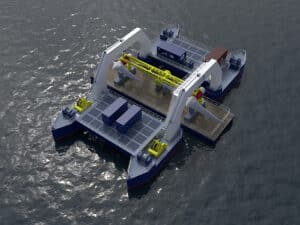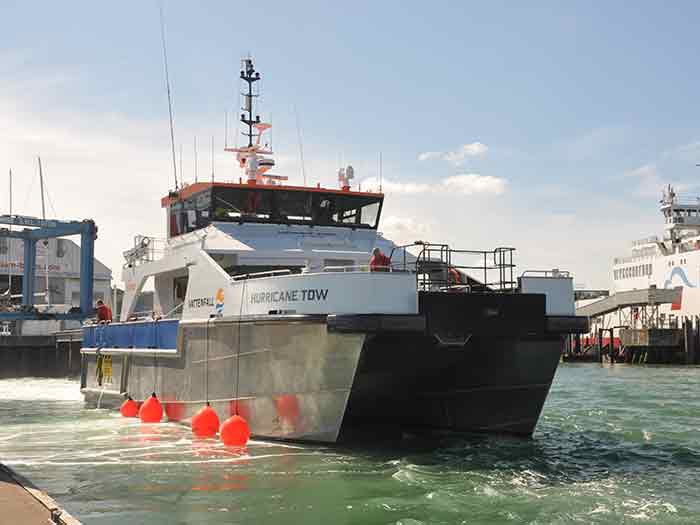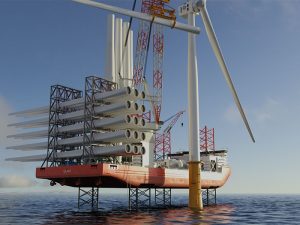
AMC develops future-proof offshore wind CTV
Written by Nick Blenkey
Hurricane TOW
NOVEMBER 28, 2016 — By 2020, predicts the European Wind Energy Association (EWEA), 354,000 people—up from 253,000 today—will be employed in the European offshore wind sector. Many of those people will need to travel an average 43.3 km from ports and harbors to offshore wind farms to install and maintain turbines.
To meet this demand, Isle of Wight, U.K., based Aluminium Marine Consultants (AMC) has developed a Category 1, Bureau Veritas-classed catamaran crew transfer vessel (CTV), working with a major offshore wind farm contractor that was so impressed with the design it bought four of the CTVs, the fourth of which was recently delivered.
Named Tempest, Tornado, Typhoon TOW and Hurricane TOW, two are 23 m long and two 25 m. They have been engineered to be essentially similar, allowing completely interchangeable crewing – a major benefit for the client.
AMC commercial director Rob Stewart considers the CTVs are future proof:
“They exceed all the usual specifications,” he says. “The design has been considered and engineered for both current and future needs; it’s not just fully compliant with current U.K. Maritime and Coastguard Agency regulations, but meets MCA’s raised standards and new guidance. It was a conscious decision to take on ‘not just the word, but the spirit’ of that guidance, ensuring our vessels will be signed off without any gray areas.”
Though the vessels can achieve 28 knots, AMC’s advanced CTV concept is not focused on transit speed alone, but also on sea-keeping qualities and the ability to remain at sea for extended periods.
The semi-displacement catamaran hull and 1.4 m draft, coupled with a high waterline, give plenty of room for waves to pass between the catamaran hulls, preventing the slamming that often happens when the wet deck is too low. The design also translates into more-than-adequate space in the engine compartments, giving easier maintenance access, and importantly, comfort for the 12 passengers and three crew the CTVs can carry.
To achieve maximum working hours on the 25 m vessels, propulsion is via a pair of MTU 12V 2000 M72 twelve-cylinder engines each rated at 1,080 kW and with a guaranteed 100% of the duty cycle, with 10V engines on the 23 m vessels. They drive Rolls-Royce Kamewa A3 56 water jets fitted with a compact, efficient reversing bucket able to deliver as much as 70% of the normal forward thrust, together with a 10% higher bollard push, helping keep the vessel pushed onto turbine towers in high seas.
That high spec also includes MTU’s Blue Vision high-speed internet connection, allowing the propulsion system to be monitored both aboard a vessel and ashore. Engine data can be evaluated to allow either operation or fuel consumption to be tweaked to give the most efficient performance for prevailing conditions.
Although primarily intended as wind farm support vessels, they are also versatile and have the capability for dive, survey, and ROV operations, either overboard or through a moonpool. They also have impressive cargo-carrying capacity. The forward and aft deck areas each have space for 10 tonnes of cargo. And a crane can be mounted if needed.
“Wind farm service vessels today, and increasingly in the future, are not just transit vessels,” says Rob Stewart concluded. “They not only have to cope with extended operating hours, but have to meet ever more stringent international regulations. Our CTVs do that—and will give peace of mind to customers.”





Leave a Reply
You must be logged in to post a comment.